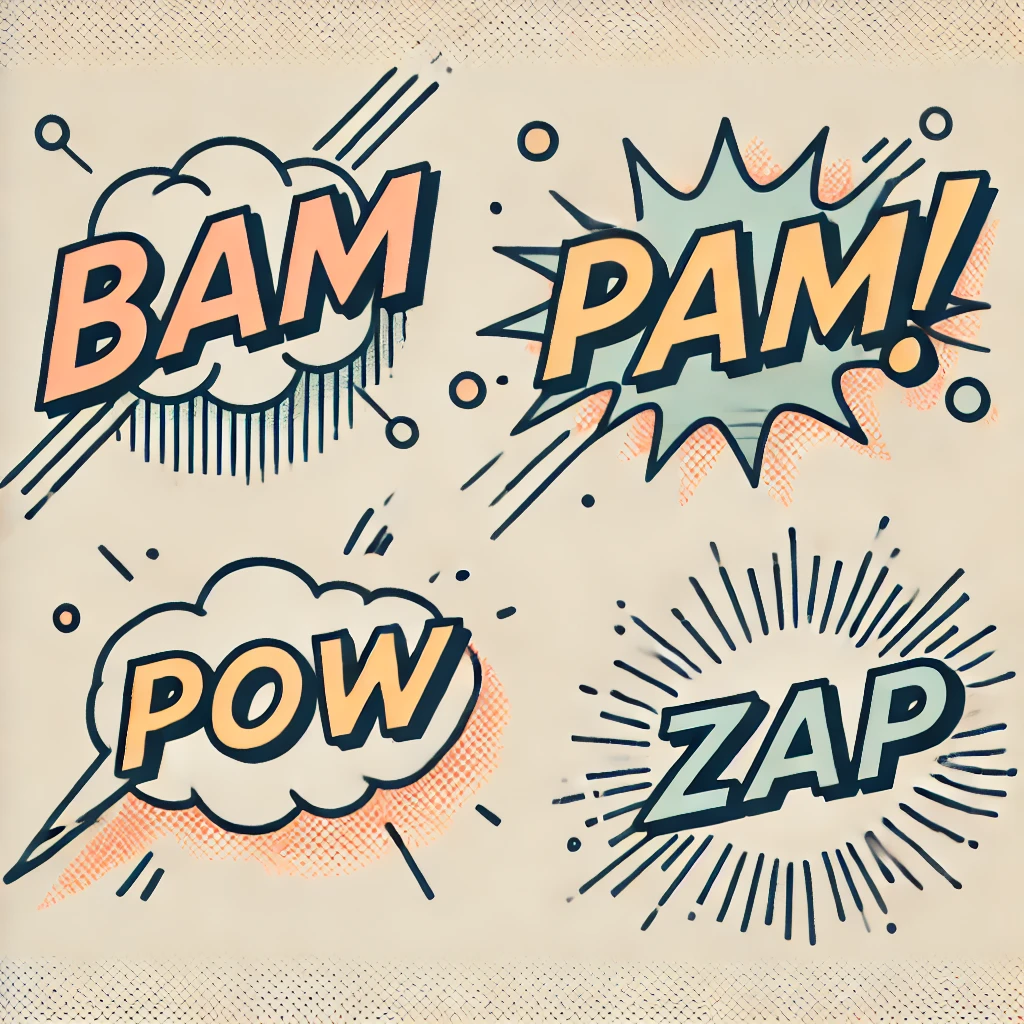what is a graphic novel?
A Genre Guide for Current & Future Fans of Visual Storytelling
What is a Graphic Novel?
The graphic novel genre transcends traditional storytelling through its unique blend of visual art and narrative, appealing to a variety of readers with its rich tapestry of narratives. For those wondering how to read a graphic novel or why graphic novels are becoming more popular, this genre guide explores the graphic novel definition, delves into the genre’s history, examines the key elements of its structure, and considers the genre’s impact and future. It will also highlight essential reads, showcasing some of the best graphic novels across wide-ranging themes and diverse age groups—from dark and intriguing plots crafted for adult readers to vibrant and adventurous tales suited for younger audiences.

Defining the Graphic Novel
What is a graphic novel? Often misunderstood or conflated with comic books, a graphic novel is a type of narrative work that combines sequential art with a story structure similar to longer novels. This literary form blurs the traditional boundaries between classical literary styles, visual art, and popular culture, crafting stories that range from fantastical adventures to profound autobiographical confessions.
The distinction between graphic novel vs comic is subtle but significant. While both graphic novels and comics involve the use of sequential art to tell a story, they differ in format and scope. Comics are traditionally serialized stories published in magazines or as standalone issues that may contribute to a longer narrative arc. They are often periodic, featuring recurring characters and ongoing plots. Graphic novels, by contrast, are usually standalone works published as a single volume with a complete story, like a novel in illustrated form. They tend to have more complex, multilayered plots and character development, providing a more substantial and often thematic storytelling experience.
The Evolution of the Graphic Novel
The history of graphic novels is rich, stretching back to the early 20th century, when graphics were primarily used for humor and satirical illustrations. However, the modern graphic novel’s roots are often traced back to the 1970s and 1980s, when pioneers like Will Eisner and Art Spiegelman revolutionized the medium.
Eisner’s A Contract with God (1978) is often cited as the first modern graphic novel, utilizing the format to explore complex human emotions and situations through four thematically linked stories set in a New York City tenement. Eisner’s use of the term “graphic novel” to describe his work was pivotal in popularizing the term and shaping the identity of this emerging form. Eisner helped to differentiate this new type of book from traditional comic books, positioning it as something new and serious—a standalone piece of literature that deserved critical and scholarly attention. Eisner’s A Contract with God demonstrated that the comic format could capture genuine human interiority and complex ethical questions, just like any other literary form, and this legacy has been fully realized, with only more room to grow.
Understanding the Graphic Novel Form
Graphic novels employ a complex interplay of text and images to convey narratives in ways that neither element can achieve alone. This section explores the fundamental elements that define the architecture of a graphic novel, including panel structure, narration, and dialogue, as well as the diverse genres and themes that graphic novels explore, ranging from historical fiction to young adult (YA) and serious literary works. Titles like Maus by Art Spiegelman demonstrate the versatility and depth of the genre, highlighting how graphic novels continue to push creative boundaries and explore complex subject matter.
Key Elements of Graphic Novels
Graphic novels integrate text and illustrations in unique ways to tell stories. To appreciate how they use different elements to encase scenes and focus the reader’s attention, it helps to understand some basic terminology.
For instance, what is a panel in a graphic novel, and what is the white space between and around panels in a graphic novel? A panel is an image that is part of a sequence used to tell a story. It contains a combination of illustrations and often text, which can include dialogue, narration, or sound effects, and it is surrounded by a frame—a border that visually separates it from other panels. Panels are fundamental to the structure of graphic novels, guiding the reader through the narrative and controlling the flow of time and information visually. Each panel serves as a snapshot of a moment in the story.
The white space between and around panels, known as the “gutter,” plays a critical role in the reader’s interpretation of the narrative, serving as a transitional space where much of the storytelling occurs. It allows readers to infer action, connect events, and fill in details that are not explicitly depicted within the panels. This space is integral to the pacing and flow of the narrative, enabling readers to mentally construct continuity and movement from one panel to the next.
In graphic novels, the word “bleed” refers to an illustration that extends to, or beyond, the edge of the page. When an image bleeds, it runs off the page, meaning there is no visible border or margin around that part of the image. This technique can be used for dramatic effect, to convey a sense of openness or the overwhelming nature of a scene, or to emphasize the expansiveness of a particular visual element within the story. Bleeds can affect the mood and pace, making scenes appear larger-than-life or more immersive.
Renowned works such as Watchmen by Alan Moore illustrate how graphic novelists can use these basic elements to challenge and captivate their audience. Watchmen employs a nonlinear narrative that intertwines flashbacks and parallel storylines, enriching the story’s depth and complexity. Moore integrates fictional documents like memoirs and newspaper articles directly into the narrative, adding layers of realism and context. Watchmen is also notable for its symmetrical panel layouts, where the layout mirrors itself from start to middle and then reverses. This symmetry is accentuated by a deliberate color palette by colorist John Higgins, which uses specific hues to evoke moods and highlight narrative shifts, adding to the story’s overall thematic and emotional resonance.
Genres and Themes in Graphic Novels
Graphic novels are not limited to any single genre—they encompass a diverse array of genres, including historical fiction graphic novels, young adult graphic novels (YA), fantasy graphic novels, and memoirs, each offering a different lens through which to explore complex themes. For example, the Maus book by Art Spiegelman, a seminal work in the realm of serious graphic novels, uses the medium to recount the harrowing story of the Holocaust through the lens of a son interviewing his father about his experiences.
March by John Lewis is a gripping graphic memoir trilogy that chronicles the life of Congressman John Lewis, focusing on his pivotal role in the civil rights movement and providing a powerful and educational insight into one of the most important periods of American history.
Nimona by Noelle Stevenson is a dynamic, witty YA graphic novel that follows the adventures of a young shapeshifter who teams up with a notorious villain, challenging the traditional roles of heroes and villains in a cleverly subverted medieval-futuristic world.
The variety of genres within graphic novels underscores the medium’s versatility. This diversity highlights how graphic novels can transcend traditional boundaries of storytelling, effectively accommodating any genre or theme.

Essential Graphic Novels: A Reading Guide
Graphic novels offer a rich tapestry of storytelling that appeals to readers across various demographics and tastes. This section serves as a curated guide to some of the most essential graphic novels that have left indelible marks on the literary landscape.
For Adults
For adult readers looking to explore deeply thematic content, Persepolis by Marjane Satrapi provides a poignant autobiographical look at growing up during the Islamic Revolution in Iran, offering insights into the personal and political upheavals of the time. The story is told through a series of black-and-white comic strips, combining visual simplicity with a powerful narrative. Marjane, or Marji, as she’s often called in the book, narrates her experiences growing up in a progressive family during a time of political upheaval, war, and societal conservatism.
Persepolis is divided into two parts: The first part focuses on Marji’s life in Tehran from the ages of six to 14, during and after the Islamic Revolution, while the second follows her as a teenager sent to Vienna for her safety, her return to Iran, and her eventual decision to leave her country permanently. The graphic novel explores themes of identity, culture, and the impact of war and political change on individual lives. The story is a deeply personal account of rebellion, loss, and survival, providing a poignant look at the trials of growing up in a turbulent world. For the complete Persepolis summary, check out SuperSummary’s Overview of the work.
For those who prefer fiction, Neil Gaiman’s Sandman series redefines modern mythology through a darkly enchanting narrative structure that combines folklore, history, and horror in a sprawling epic. Sandman intricately weaves together diverse mythological and literary references across time periods, creating an interconnected universe that captures the imagination and explores the deeper meanings of dreams and storytelling.
For Young Adults
Young adult graphic novels often explore identity, culture, and adolescence, with titles like American Born Chinese by Gene Luen Yang and Anya’s Ghost by Vera Brosgol offering relatable narratives infused with cultural and supernatural elements. American Born Chinese interweaves the lives of three seemingly unrelated characters to explore complex themes of identity, culture, and acceptance through vivid artwork and engaging narratives. Anya’s Ghost is a captivating graphic novel about a young girl who befriends a ghost when trying to navigate the challenges of high school, blending supernatural elements with the poignant realities of adolescence.
Another great option for teens is Ghosts by Raina Telgemeier, which delves into the themes of family and acceptance, portraying two sisters who unravel the secrets of their new hometown through engaging, vibrant storytelling, Meanwhile, Lumberjanes by Noelle Stevenson features a dynamic group of girls at an unusual summer camp, where they encounter supernatural entities and embark on thrilling adventures that celebrate friendship and bravery.
For Kids
Graphic novels for kids often combine humor, adventure, and valuable lessons in accessible formats that engage young readers’ imaginations. For younger readers, entertaining adventures and heartfelt stories are found in works such as Bone by Jeff Smith and El Deafo by Cece Bell, which combine humor and poignant observations on life’s challenges. Bone is an adventurous graphic novel series that follows the Bone cousins through a mysterious valley filled with wonderful and terrifying creatures, combining humor and epic fantasy. El Deafo is a heartwarming autobiographical graphic novel that chronicles the author’s childhood experiences with hearing loss, offering a unique perspective on the challenges and triumphs of growing up with a disability.
Younger readers might also explore Zita the Spacegirl by Ben Hatke, which follows the daring adventures of Zita as she transforms from an ordinary girl into a space-traveling hero, facing aliens and challenges with courage and wit, or Smile by Raina Telgemeier, an autobiographical graphic novel that captures the trials and triumphs of growing up, centered around Raina’s real-life experiences with dental drama and middle school.
The Graphic Novel in Popular Culture
Graphic novels extend their influence well beyond their pages. These narratives have sparked broader cultural discussions and influenced other media forms. From cinematic adaptations that bring graphic novels like Scott Pilgrim vs. the World to the big screen, to their roles in social movements and discussions, graphic novels resonate profoundly with global audiences. This highlights the dynamic role graphic novels play in shaping and reflecting societal trends, demonstrating their significance in contemporary cultural dialogue.
Influential Authors and Works
The graphic novel genre owes a great deal to authors like Alan Moore, known for writing two of the best graphic novels, V for Vendetta and Watchmen, and Alison Bechdel, with her influential Fun Home: A Family Tragicomic graphic memoir. These authors have created narratives that push societal norms and expand the boundaries of traditional storytelling. Alan Moore’s work challenges and expands the scope of graphic storytelling. Alison Bechdel’s work explores complex themes of family dynamics, orientation, and identity, challenging mainstream perceptions of what graphic novels can represent.
Adaptations and Cultural Influence
The adaptation of graphic novels into films, TV shows, and even video games continues to grow. These adaptations not only increase the visibility of the original works but also create a feedback loop that brings new audiences to the graphic novel format. Graphic novels frequently transcend their pages, with many adapted into films, TV shows, and digital formats, reaching wider audiences. Scott Pilgrim vs. the World, adapted from Bryan Lee O’Malley’s graphic novel, showcases the potential of graphic novels to shape pop culture narratives and influence filmmaking.
Moreover, the adaptation of graphic novels into films and other media showcases the significant impact of graphic novels within the broader cultural landscape. Adaptations of graphic novels like Watchmen and V for Vendetta strive to remain faithful to the visual style and narrative depth of the original works. This faithfulness is crucial in preserving the unique elements that fans loved about the graphic novels: Watchmen (2009) was noted for its close adherence to the comic’s visuals and complex storytelling, though it also made some changes to fit the cinematic format.
Film adaptations often amplify the themes and messages of the original graphic novels, bringing them to a wider audience. For instance, V for Vendetta’s themes of resistance and individual liberty resonated with various social movements of the time (2006), demonstrating how film can enhance and spread the graphic novel’s political messages.
Kick-Ass (2010) further exemplifies how graphic novels can be adapted into highly successful mainstream film franchises. These adaptations often help to validate the commercial viability of graphic novels as source material for blockbuster films, encouraging more investments into similar projects. As films like these garner critical and commercial success, they help to elevate the status of graphic novels as a legitimate and rich literary and artistic medium.
Emerging Trends in Graphic Novels
Significant shifts are occurring within the graphic novel industry, with a notable rise in autobiographical and memoir narratives. This growing popularity, exemplified by Allie Brosh’s Hyperbole and a Half, highlights a trend towards personal storytelling that deeply resonates with readers.
Additionally, the rise of webtoons and online comics like Lore Olympus illustrates the genre’s adaptation to digital formats, which broadens its reach and influence. The surge in digital platforms is revolutionizing how graphic novels are consumed, with titles like Lore Olympus gaining international followings.
As graphic novels gain literary recognition and tackle a wider array of themes—including mental health and LGBTQ+ narratives—they reflect societal changes and push the boundaries of the graphic novel form. Mariko Tamaki’s Laura Dean Keeps Breaking Up with Me is a good example of this expansion, exploring a tumultuous romance between two teenage girls.
The Future of the Graphic Novel Genre
As digital platforms become more prevalent, graphic novels are poised for continued growth in popularity and literary recognition. Works like They Called Us Enemy by George Takei demonstrate the genre’s capacity to address complex historical and personal narratives, signaling a future where graphic novels are increasingly recognized as a significant and legitimate form of literary expression.
Additionally, the unique format of graphic novels allows for experimental storytelling that can blend visuals and text in innovative ways. This flexibility makes it an attractive medium for writers and artists seeking to explore complex themes such as identity, mental health, and societal issues without the constraints typical of traditional novels.
As technology continues to evolve, digital platforms offer graphic novels a broader canvas and the potential for interactive elements, which can engage readers in new and immersive ways. Webtoons and digital comics have already begun to redefine how stories are consumed, making it easier for creators to publish without the need for traditional print mediums.

The Lasting Appeal of Graphic Novels
This exploration of graphic novels has covered the rich diversity of a genre that continues to captivate and evolve, engaging readers of various demographics and literary tastes. From intricate narrative structures and unique visual storytelling elements to their profound cultural impact and emerging trends, graphic novels have proven to be a dynamic and enduring literary form.
Graphic novels merge artistic expression with narrative depth, offering a unique reading experience that is both visually engaging and intellectually stimulating. Their capacity to convey complex narratives through sequential art ensures their continued appeal to both readers and collectors.
As the graphic novel genre continues to evolve, it offers an ever-expanding universe of themes and stories. Whether you are a seasoned fan or a newcomer, delving into graphic novels can broaden your understanding of narrative possibilities and artistic expression, enriching your appreciation of modern literary landscapes.